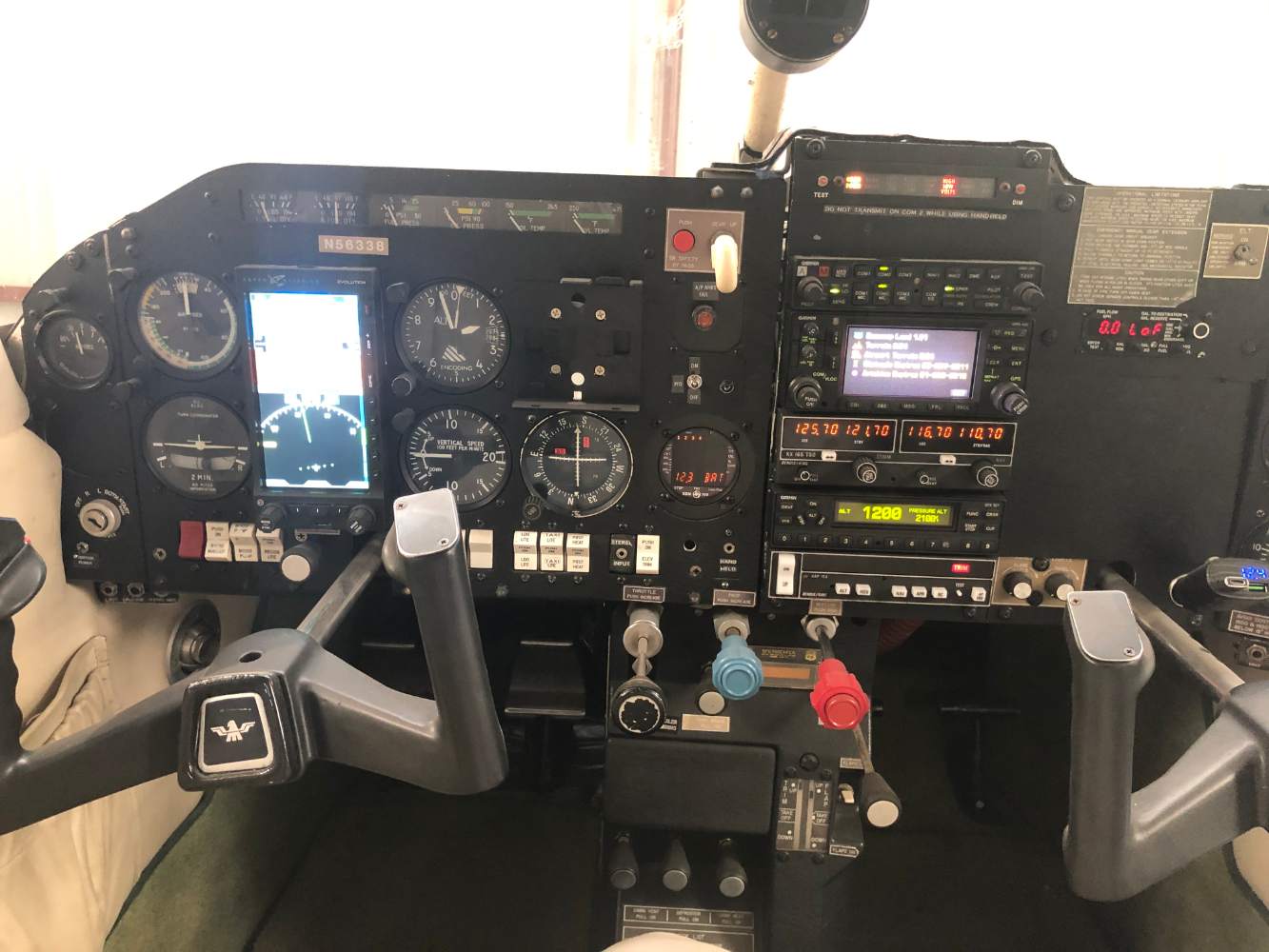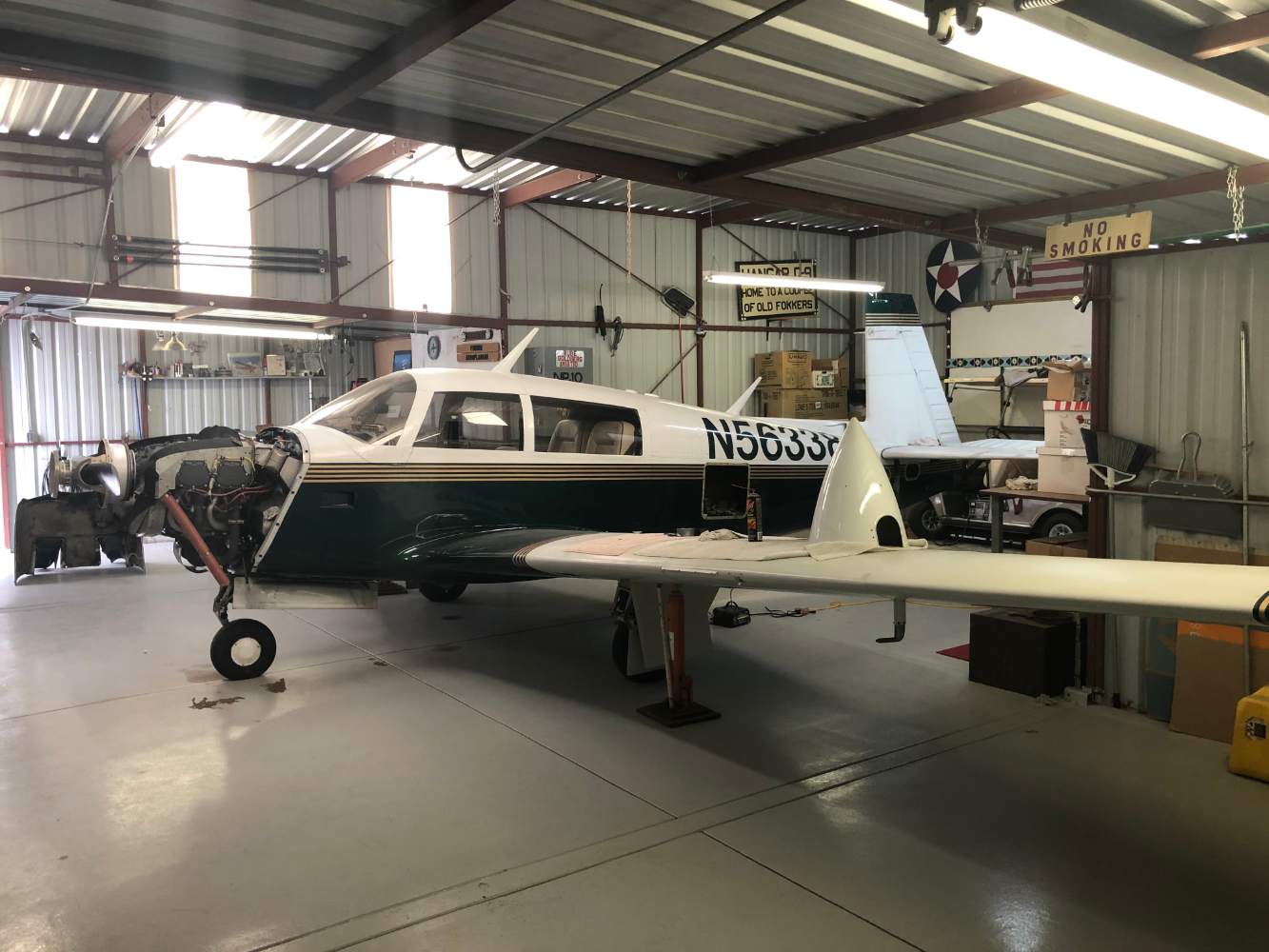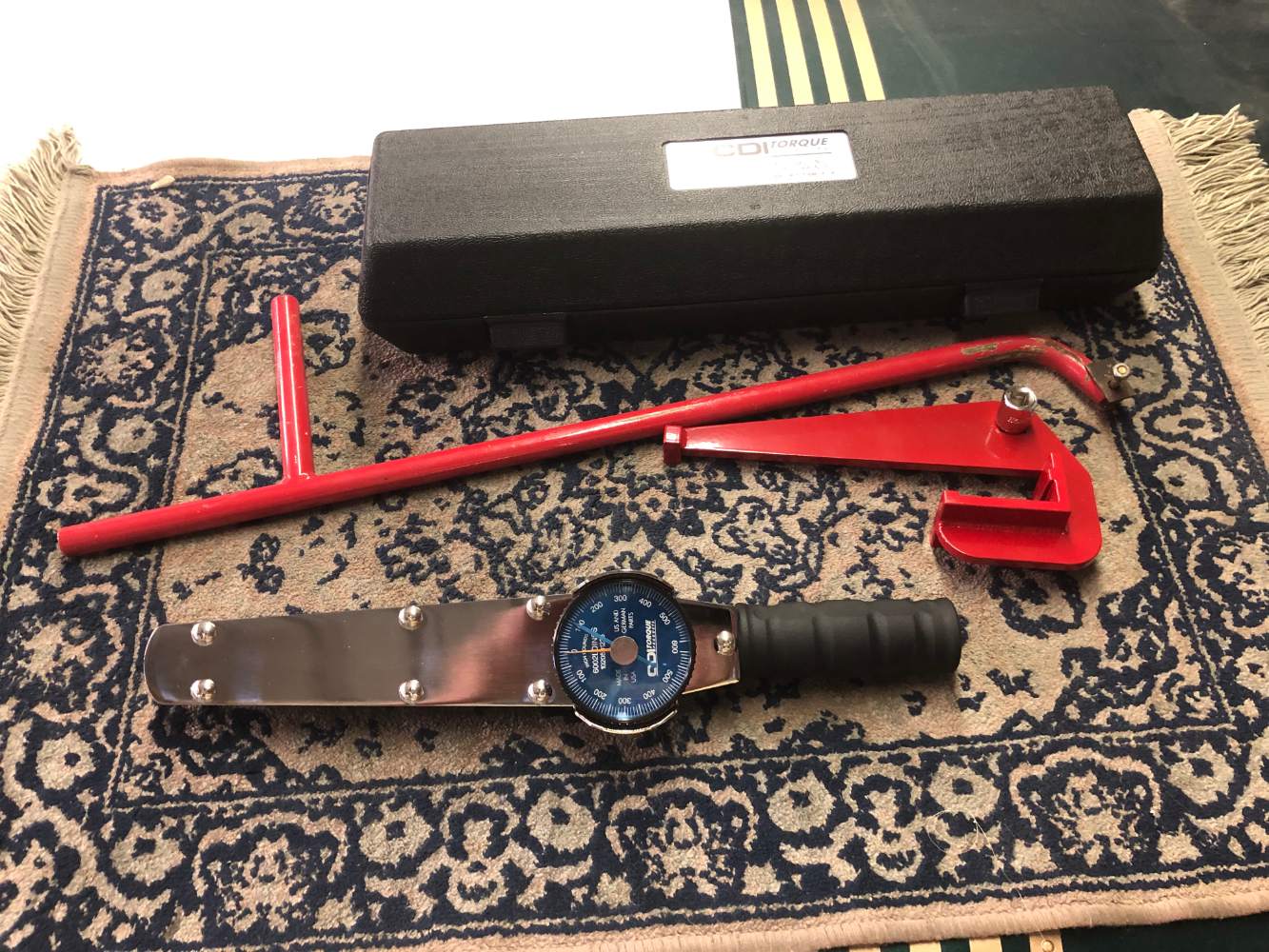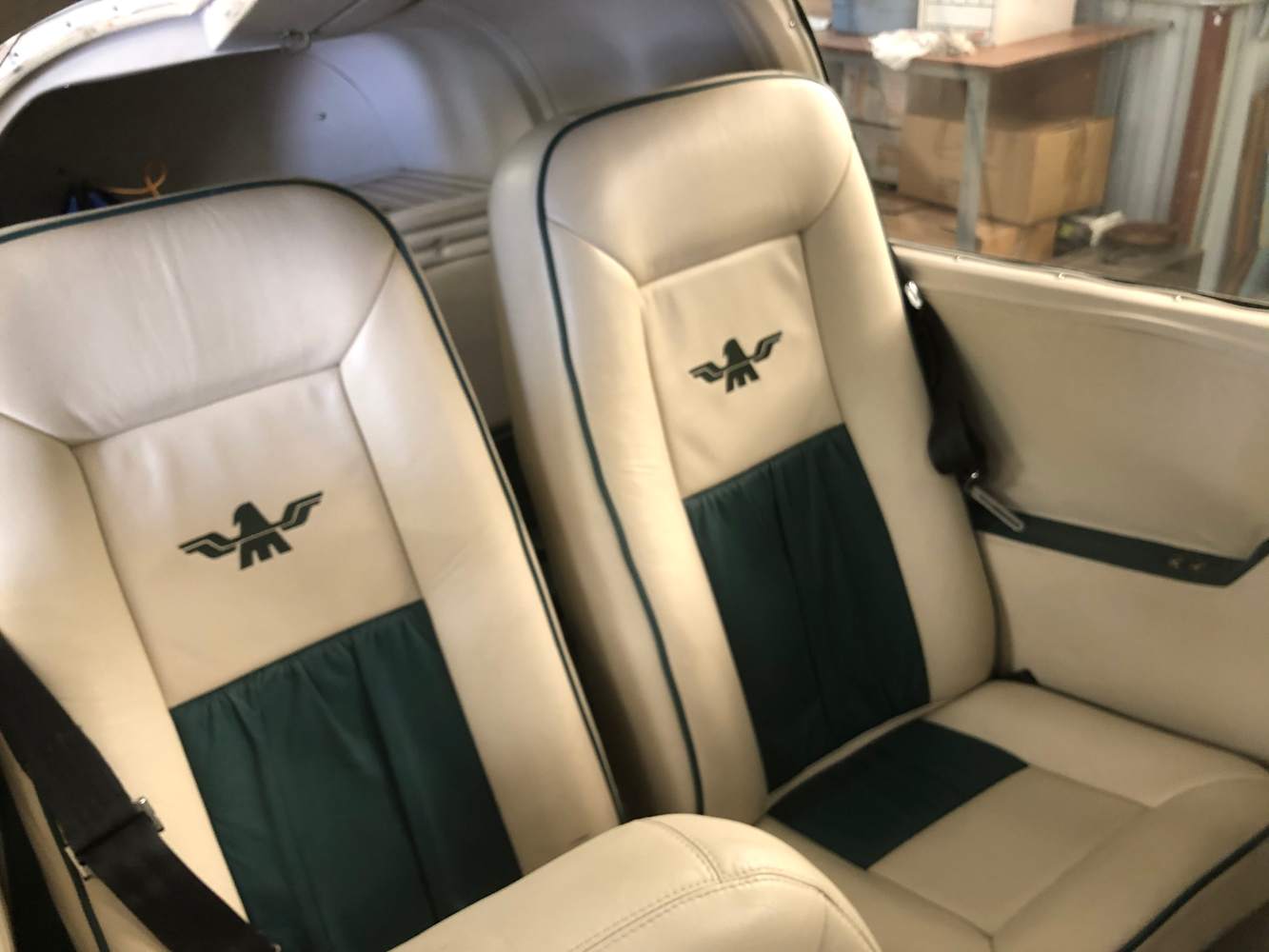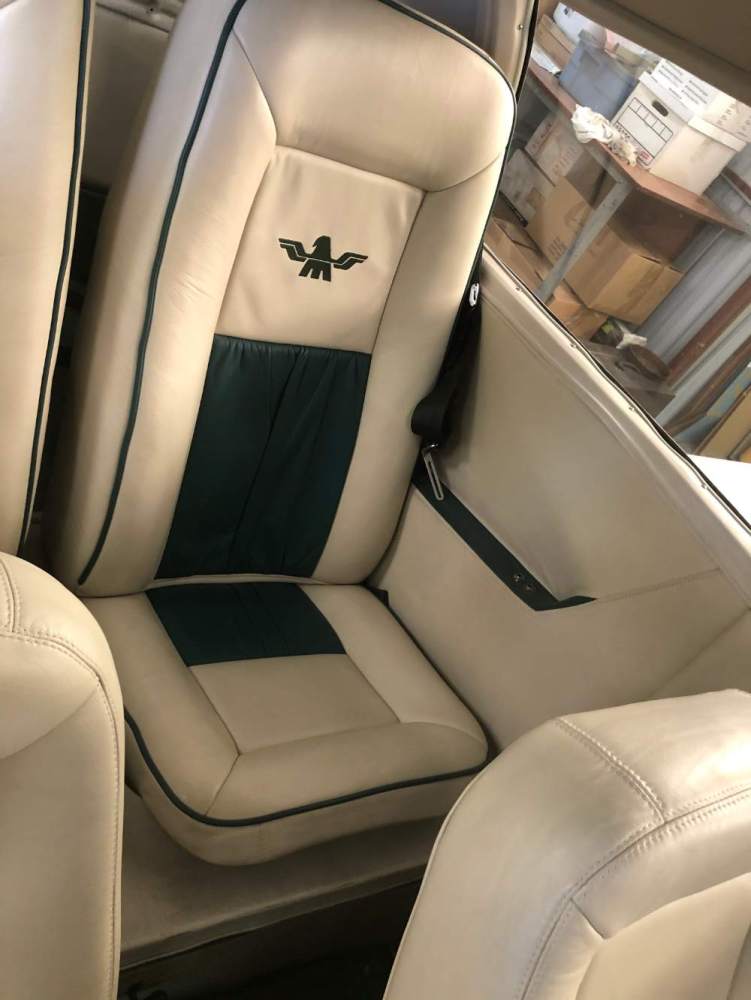-
Posts
184 -
Joined
-
Last visited
Content Type
Profiles
Forums
Blogs
Gallery
Downloads
Media Demo
Events
Everything posted by flyer338
-
I have decided to retire from flying. I am selling my Mooney. It is currently undergoing an owner assisted annual. I have put the annual on pause. The airplane is opened up and ready for a pre-purchase evaluation. I intended to install a Challenger air filter and LED landing and taxi lights - I already have the parts. The airplane is hangared at North Las Vegas airport (VGT). I will make the hangar available to the buyer at my expense long enough to complete the annual. I am sure the present owner of the hangar would rent it to the buyer long term if the aircraft will continue to be based at VGT. Aircraft N56338 S/N 24-1372 5732 TTAF; 769 TT since factory overhaul ("0" time logbook); 903 lbs useful load IFR current Standard fuel - gauges in each wing Fold-down rear seats No damage history Equipment ("0" time logbook Engine: Lycoming IO360 A3B6 with roller tappets New Slick left mag Right mag has been replaced by an ElectroAir EIS 41000 electronic ignition with spark advance Fuel injection servo overhauled in last 40 hours New spark plug wires Reiff engine heater Oilmatic pre-oiler GAMI injectors Propeller McCauley B2034C214-B 920 hours since overhaul Avionics Aspen EFD1000 E5 – Primary Flight Display Garmin 430 IFR GPS with glideslope King KX-165 with glideslope King KAP 150 autopilot - recently overhauled Garmin 340 audio panel Garmin GTX 327 transponder Garmin GDL82 ADS-B out JPI 700 engine analyzer Shadin fuel flow Dynon D2 backup AI Other Front seats recently recovered in leather Gear tools as pictured Jacks and tailstand Like new cabin cover All manuals and parts books Parts included: Two oil filters Eight spark plugs Sixteen quarts of oil Misc. screws etc. Specifications subject to verification Logs available electronically upon request
-

Fatal crash in California on July 15
flyer338 replied to Eduleo's topic in Mooney Safety & Accident Discussion
I used to fly my C model out of Dinsmore somewhat regularly. The useful load on my J is 904lbs. Figure 20 gallons of fuel remaining when they landed, more than enough to get to Fortuna. That leaves 784 lbs for people and bags. I think that on a hot day I would want to be well under gross weight before taking off. At least until I had experience with this plane on that strip. Dinsmore sets down in the valley near the Van Duzen river. The east end of he runway comes very close to Hwy. 36. Most planes, even at light weights, do not have enough climb performance to climb straight out, in either direction. The wind usually favors a west bound departure. Light airplanes do not always have the performance necessary to take off at gross weight. -
It is annual time, and the brake pads are fine, but the pads are something to have in stock.
-
I am buying consumable items and hardware to have on hand against sudden need. The list includes a set of 66-10500 brake pads. I notice that Rapco pads are just over half the cost of Cleveland pads. Does the cost difference reflect a quality/longevity difference? What says the group?
-

FRONT SEATS, ARTICULATING,
flyer338 replied to Jerry Pressley's topic in Avionics / Parts Classifieds
Are the seats interchangeable between the right and left sides? -
Based on the time it took to R&R the number 3 cylinder on a friends 172 (under appropriate supervision), I would say 4 hours.
-
Third on the J model app.
-
Don, thank you for getting so much Mooney history gathered together in one place. Back in mid-2019 I looked at N43PG and N87PM. Both were at Placerville, CA. They were offered by Skywagons LLC. The pictures of those two Mooneys the article look like they were taken at Placerville. Last August I saw N43PG at the MSC at VGT; the nose gear had broken off and the propeller was bent. http://www.kathrynsreport.com/search?q=N43PG
-
I am doing my annual. I intend to replace the landing and taxi lights with LED bulbs. My 1983 201 has two taxi-lights in the right wing (I do not know how that happened; the Mooney parts manual does not show a wing mounted light for my serial number) and a landing light in the cowl. I would appreciate it if @LANCECASPER would contact me privately to consult. The lights to be replaced are GE Q4509 (x2) and GE4522.
- 44 replies
-
- m20j
- landing light
-
(and 3 more)
Tagged with:
-

M20F cruise performance & service ceiling
flyer338 replied to Chris Briley's topic in Vintage Mooneys (pre-J models)
I have taken a 1965 C Model to more than 17,500 and was able to trueOut at 140 knots TAS on about 6 gallons per hour hour. -

M20C crack found during annual. Worried.
flyer338 replied to MCDsiena's topic in Vintage Mooneys (pre-J models)
Another thought, why wasn’t this discovered and addressed during the pre-buy? -
I made a fuel dipstick for my 1965 C Model with 26 gallons usable per side. I started by running a tank dry. Then I added five gallons and marked my dowel. In order to ensure repeatability of the measurement, I inserted the dowel in the outermost of he three lug positions in the fuel opening. Using a five-gallon interval gave me solid numbers and interpolating between the five-gallon marks turned out to be accurate and consistent. I dealt with the fuel climbing up the stick by only dipping for a second or less, and then ignoring any runners climbing the fuel stick. I used a knife to carve a line in the Lowe’s purchased dowel (I shopped in the PMA TSO department). I made a fuel stick for my recently purchased M20J. I approached this a little differently because I am not (yet) comfortable with running a tank dry with a fuel injected engine. What I did was sort of a reverse extrapolation. I ran a tank close to dry. Then I added fuel until the fuel just registered on my stick. Then I added fuel five gallons at a time and marked my stick until I filled the tank. By subtracting the fuel added from the fuel necessary to fill the tank, I knew how many gallons were in the tank at the first dip. By adding five gallons for each mark, I know the fuel in the tank at the first mark, and it is easy to interpolate between the five gallon marks. I used the fuel cap lug farthest from the fuselage for consistency. I noted that the float gauges on the wing tanks are reasonably accurate. The electric gauges on the panel are not even consistent from left to right. It is the responsibility of every pilot to know how much fuel is on board. Sometimes I want to be light and have only the fuel I need (including a reserve) because I plan to depart from a high density altitude airport (Panguitch, Utah; 6700’ and 87 degrees for a density altitude of about 9500’ ft). I think experience in the plane earned over a long time is critical, and until that experience is validated one should be especially conservative. I do not yet have that experience in my J. I expect that experience will expand or contract my comfort zone and help me to become an old pilot.
-

M20C crack found during annual. Worried.
flyer338 replied to MCDsiena's topic in Vintage Mooneys (pre-J models)
When I bought my 1965 M20C in 1992, the pre-buy revealed vertical cracks where the flap brackets attached to the spar. The cracks has been stop drilled. Over 20 years and 2000 hours, the cracks did not grow. The plane is still flying out of New Jersey. I suspect the repair might have been done before Mooney issued the SB. I was careful to avoid flaps down at speeds in excess of Vfe. I think I only did it once or twice. -

Perfect Example of Pilot's Authority in an Emergency
flyer338 replied to cliffy's topic in Miscellaneous Aviation Talk
While watching the video, I was thinking this might be a time to file a NASA report. -
I am flying my 2nd Mooney. I did all of the work for my annual inspections on the first one for about 20 years, and the IA did the inspection. The PPI for my 201 was done by a MSC, and I rolled that into an annual. I was disappointed with the quality of their work. I suspect that good A&P technicians and apprentices are more and more difficult to find; it requires a great deal of knowledge, and licensing that is both difficult and expensive. The MSC did not note that the HSI did not consistently show the correct heading when slaved and precessed when not slaved. They also failed to notice the compass correction card was missing, there is a short that trips the breaker for the recognition lights, the boost pump switch does not remain in the “on” position, and an air duct was rubbing on the inside of the cowling. In a few minutes I am heading to my hangar, and I will begin opening my 201 for annual inspection. I have a list of things to be repaired, modified, and upgraded. I have an IA available. The IA does not have much Mooney experience. Between my experience, his knowledge, my reference manuals and Mooney tools, and the collective wisdom of the community available here, we will be fine. It is my butt on the line, so you can be sure I will be meticulous.
-

Mooney Aerodynamic Curves (Nerd Alert)
flyer338 replied to 0TreeLemur's topic in General Mooney Talk
I hope it is all right to resurrect this old thread. It is a great thread even for those of us whose calculus ability has evaporated into the mists of time. This thread motivated me to look for a copy of John T. Lowry’s “Performance of Light Aircraft.” It seems to be almost unobtainium. Does anyone have a source for the book? I have checked Amazon and Abe Books, but $80 seems a bit steep; it offends my thrifty nature (some of us are thought to be CB, but I prefer “thrifty”). -
I have been away, or I would have responded sooner. That is the article. I suspect @Blueontop is correct and the 330 mph claim was a typo.
-

Electroair EA-15000 Ignition switch
flyer338 replied to NotarPilot's topic in Avionics/Panel Discussion
The Bendix switch in my M20C had 6500 hours plus when I sold the plane. Not long ago I read about a fatal accident. The pilot turned the mags off and took the key out. A few moments later he turned the propeller slightly. The engine stared and ran for about two blades. It was enough to kill the pilot. The FAA investigation found the ignition switch worn enough that the key could be removed without the mag being grounded. This is a very scary, even if rare, possibility. It makes the dual switch set up attractive. -
When examining the cause of a cam failure (Lycoming four-cylinder engine) there are factors more predictive than brand or type of oil. Lycoming four-cylinder engines lubricate the cam lobes with oil that splashes off of the crankshaft. When the engine is turning fewer than 1000 rpm, there is not enough splash oil to adequately lubricate the cam lobes. Cold temperatures and straight weight oils may make this worse. My first question when looking for the cause of a cam failure is how much time did the engine spend running at fewer than 1000 rpm?
-

Mooney buyers - be on the lookout
flyer338 replied to chriscalandro's topic in Vintage Mooneys (pre-J models)
Not long after I got my PPL, I looked at an Aero Commander Darter that was tied down at Gnoss Field (Novato, CA about 1990). It flew about like a 172 - I wound up buying a Mooney M20C. -
I used to routinely run a tank dry when I flew a carbureted Mooney. In cruise flight, I knew the normal fuel pressure reading. When the fuel gauge got to the place, where I knew from experience that the tank was about empty, I watched the fuel pressure. When it started to fall it was boost pump “on” and switch tanks. I never had the engine even stumble. Now that I fly a fuel-injected airplane, I wonder what happens when a tank runs dry? I suppose I shall have to try it. (Of course the engine quits, but after what warning, and after switching tanks how long before there is power again.)
-
I think I am in the minority here both in my opinion and my experience operating and rebuilding gasoline engines. Most of my mechanical experience is with automotive engines. I appreciate that the experience is not fully transferable, however the underlying science is fully transferable. I respect Mike Busch, and I have read his books, all of them. While reading his books I identified several areas where I think he is wrong; oil selection is a big one. When I sat for the Bar exam to become licensed as a lawyer, I was already certified by the National Institute for Automotive Service Excellence as a Master Automotive Technician as as a Master Engine Machinist. Our engines usually operate with oil temperatures between 180 and 200 degrees Fahrenheit. The operating manual for my plane calls for an oil temperature of 150 degrees before take-off. At 150 degrees any aviation oil will flow adequately to lubricate the engine. The rub is the time between start and oil temperature coming up to 150 degrees; this is when most of the engine wear takes place. And this is why I use multi-grade oil, despite being based in Las Vegas, NV. My previous Mooney was a C model, and after Chevron bought me a factory remanufactured engine in 1995, after break-in I operated it exclusively on Aeroshell 15w-50. I ran that engine to 1600 hours before selling the plane in 2014. The last five years before I sold the airplane mostly sat not flying. I am in touch with the current owner and the engine is doing fine. The advantage of a multi+grade oil it flows the same at cold temperatures as at operating temperature. Multi-grade oils are an important reason that automotive engines routinely run more than 200k miles.
-
I am sure it was not killed by a Mooney; our planes are kind to fellow creatures of the air.


